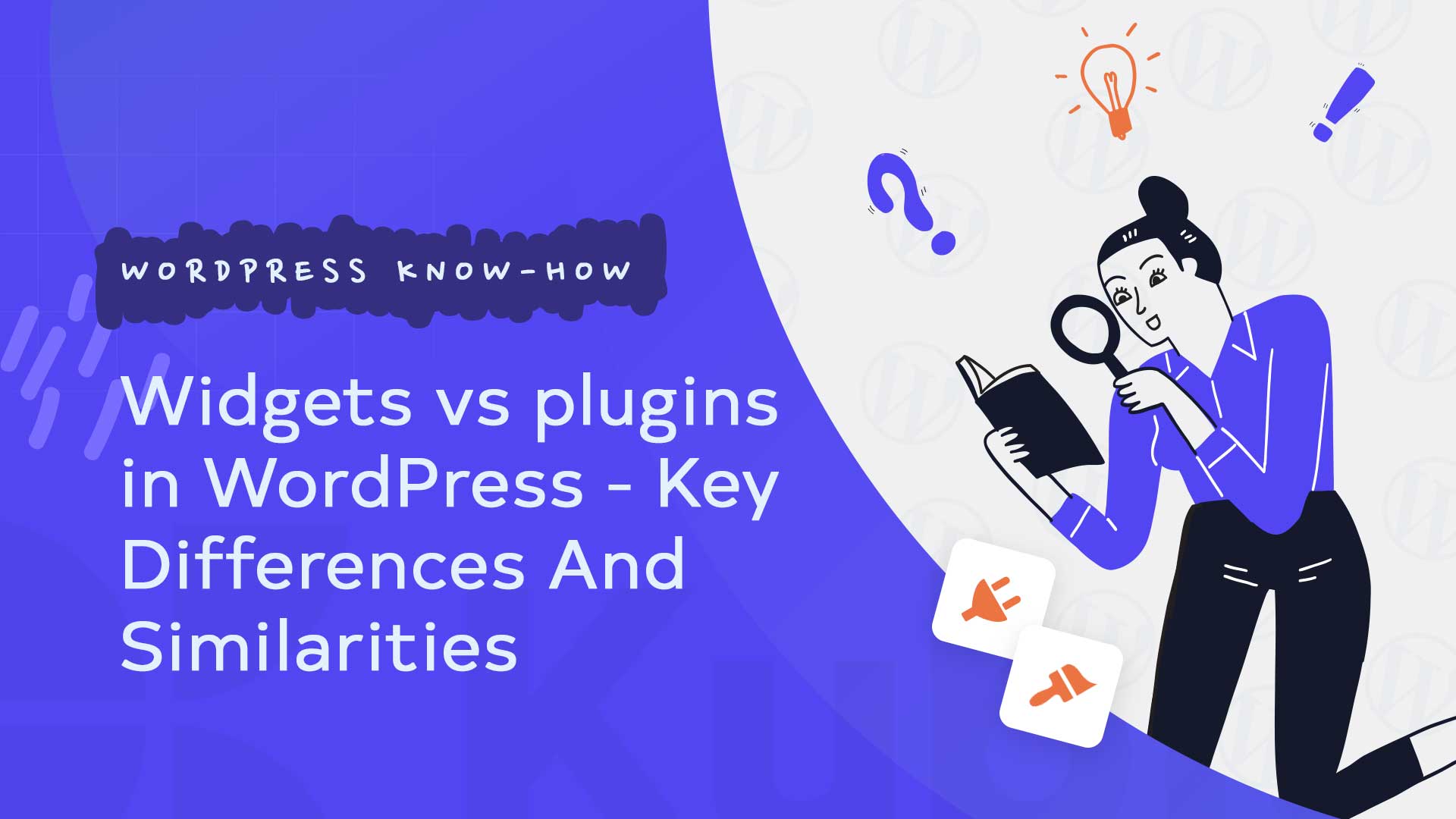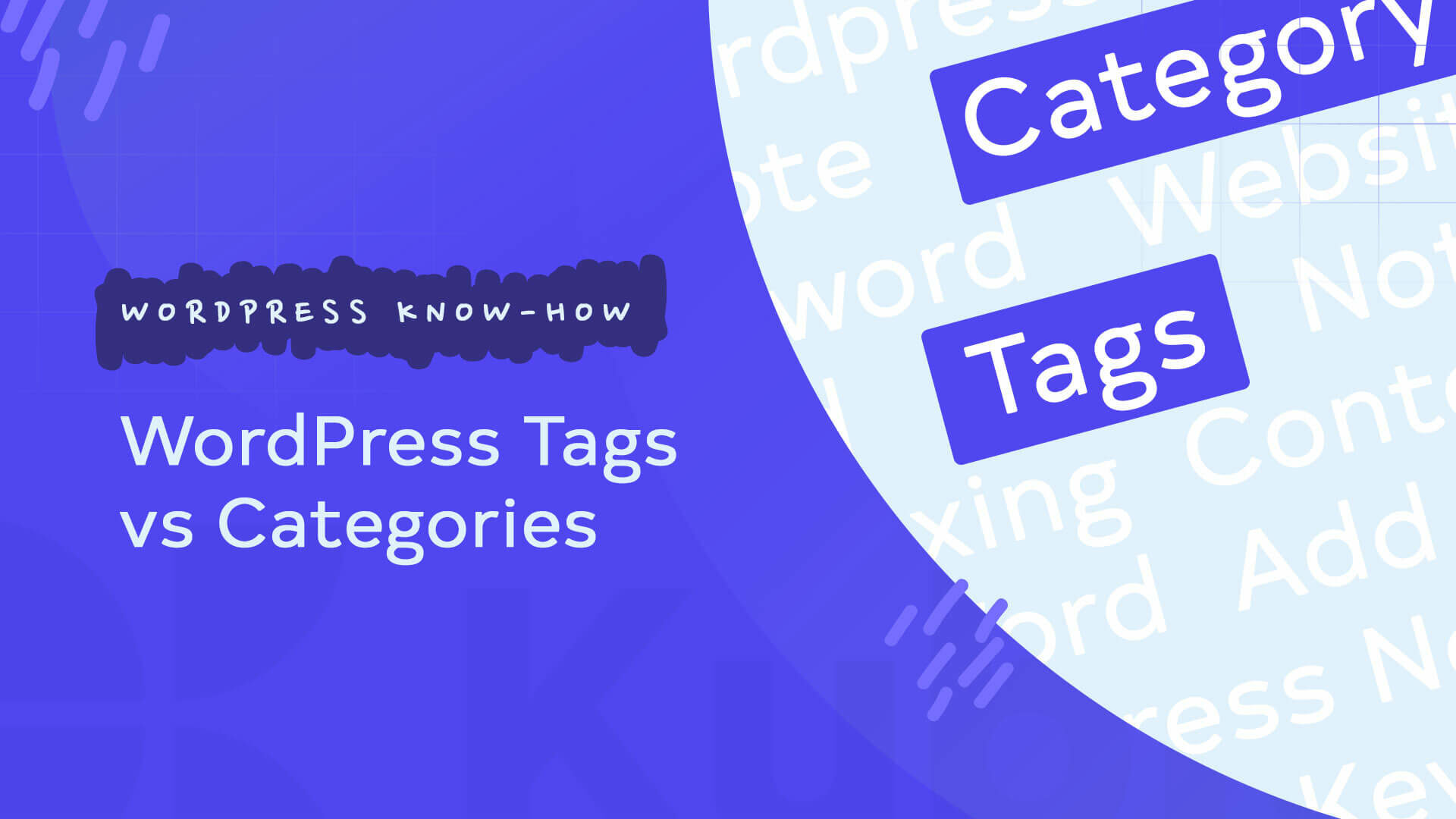WordPress is a platform that offers truly remarkable functionality. It’s easy to use even for beginners and allows you to do a lot with your website or blog, without an impressive budget or advanced knowledge. But there is one thing about WordPress that many do not know: it would not be as functional and efficient if it were not for plugins and widgets .
In this article we will try to clarify, once and for all, a question that we have heard a thousand times: What exactly is the difference between widgets and plugins in WordPress?
Many people confuse plugins and widgets because both are difficult to define and perform similar functions. Still, it’s important to distinguish between the two. That way, when you need some additional functionality on your site, you’ll know exactly what to look for.
Before we try to untangle all the similarities and differences between WordPress plugins and widgets, let’s first explain what they are.
What are WordPress plugins?
The official WordPress website defines plugins as ” ways to extend and add to functionality that already exists in WordPress .” So, that’s what they do. But what are they?
Plugins are essentially pieces of software (sets of functions written in PHP) that can be added (“plugged in”, if you will) to any WordPress website. Think of them as plugins, extensions, or even apps, just like the ones on your phone. They integrate seamlessly with the WordPress core and perform specific functions.
To keep WordPress as light and simple as possible, its creators have deliberately omitted a number of features that an average user might need. However, those features can be easily added via plugins.
Each plugin has a specific purpose, and only that purpose. When functionality is added via a plugin, it greatly improves the overall user experience. For example, WordPress themes with the Contact Form 7 plugin are very popular, as this plugin represents everyone’s favorite way to add a high-quality, customizable contact form to your site.
Other widely used plugins include page builders like Kubio, plugins for adding social buttons, calendars, anti-spam, as well as those for improving SEO, clearing the cache, etc. The WordPress plugin repository currently has over 55,000 plugins, so you get the picture.
Plugins extend the functionality of WordPress as a platform and make your website more functional and powerful . They are easy to install and can be easily removed once you no longer need them.
What are WordPress widgets?
It is true that widgets are a bit more difficult to explain. They are tools that help you add features, content, and segments that your website needs but doesn’t have . Unlike plugins, they are more related to the design of your site than anything else.
It’s hard to find a precise definition of what widgets are. Seems like even the WordPress users have a hard time with this one. But let’s try:
Some widgets already come with WordPress by default. These include post categories, tag clouds, search bars, navigation, etc. If you need these elements, you must add them, as widgets, to the predefined widget areas . These depend on the theme you are using, but in most cases they include the sidebar of your website, as well as the footer. It’s important to understand that these widget areas (or widgets) are always predefined and represent the only places where you can add a widget – you can’t just put one wherever you want.
In the image below, the blog page has a search bar, recent posts, categories, etc., all located in the sidebar. All of these were added as widgets.
The blog sidebar is the most used widget area , and that’s where most of the used widgets are placed.
However, premium themes often have more widgets and more widget areas.
The difference between plugins and widgets in WordPress
As we explained above, both plugins and widgets are used to add something to your WordPress website. They make WordPress more functional and feature-rich. Simply put, we use plugins and widgets when we want to do something that the basic WordPress installation or the theme we’re using can’t do.
So far, they sound pretty much the same, right? But there are a couple of important differences that will help you understand which is which.
First of all, plugins are more about functionality than appearance . Sure, some plugins are used for appearance related purposes, and that is why so many people get confused. But in most of the cases, they do certain hidden actions like speed up your website, auto clear your cache, duplicate your posts, regenerate thumbnails etc. Widgets can’t do that.
Widgets, on the other hand, are generally used when we want to display something on our site. or change the way something is displayed. In fact, they’re even found in the Appearance tab in Control Panel:
They help improve website interactions, for example by allowing you to display a subscription form. If you want to add a calendar to your sidebar, you can use the Calendar widget and simply drag it into the sidebar widget area. The calendar will appear on that particular part of the page.
But here’s where it gets tricky: sometimes, you can’t add a widget without a plugin .
How to use the plugins and widgets in WordPress
Let’s say you want to add a calendar to your website. The easiest way to do this is to use one of the WordPress themes with the Events Calendar plugin. This plugin does two things when you install it. One is that it creates new options in the page editor, allowing you to add a calendar to one of your pages. The other is that it creates a whole new widget, the Calendar widget, which you can add to one of your widget areas just like any of your pre-existing widgets.
Therefore, in order to use the Calendar widget, you must first install the special plugin that will make it possible.
Another good example of this synergy is the Contextual Related Posts plugin. This plugin allows you to display a list of related posts on your blog pages, for example, in the sidebar. Now, you most likely already have a widget that allows you to display recent posts in the sidebar, but not related ones.
So, to achieve this, you’ll first need to install the plugin, after which you’ll be able to drag the Related Posts widget to the widget area of your choice.
As you can see, sometimes plugins and widgets go hand in hand , expanding the functionality of your website, improving it and helping you create a richer experience for your visitors.
Conclusion about WordPress Widgets and Plugins
Editing and customizing your website is now very easy because you can use either widgets or plugins for this task. Based on what you need and what you want you can use those 2 features to edit your website.
Now that you know what are the differences between a plugin and a widget in WordPress we recommend you to use them both on your site.
Feel free to check our Youtube channel or to check our blog to find out more information about Kubio Builder.






